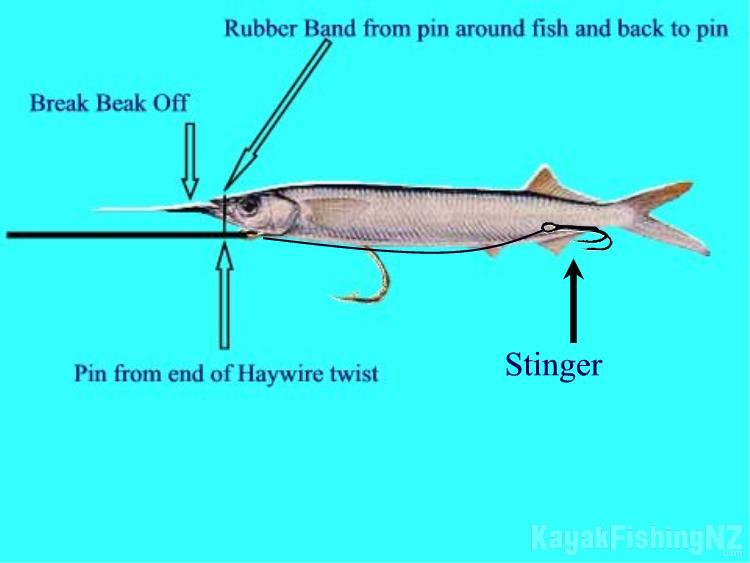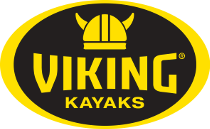Trolling lures Q&A session with Stephen Tapp
8:41PM 19th Jan 14
Our recent series of articles and blog posts on the subject of trolling lures has seen resident expert Stephen Tapp feild a number of very good questions on the subject. Here we share a number of the questions, many of you may also have, from a recent thread on our local kayak fishing forum.after reading these you can see the original thread here at KFNZ
Links to previous articles from Stephen on lures can be found below -
The art of trolling from a kayak
Trolling hard body lures for Snapper
How to catch Tuna from a Kayak
Q. I love the idea of trolling, but not sure if I'm wasting my time with what I'm doing.
"if you are going to move anywhere drag something" Awondering
A. That there is THE most important statement... A Over many long years on the water I've caught snapper trolling everything from hex wobblers and jigs to occy skirts, salt water flies, and softbaits. Bibbed hard bodies work the best for me though, I believe in part because the sound vibrations they send out let the fish know they're coming long before they're in sight.
Before I started doing so much lure trolling from kayaks I used to troll ballyhoo rigged piper (trolling rigged baits works a treat). From kayaks they caught me everything from snapper to kingfish!
Here's a rough approximation of the rig (off the net). I never used to bother with the stinger hooks, used wire solder to secure the head and add a little weight, and I used to slide a small occy skirt over the head of the piper to help it troll without falling apart...

Q. This may be a dumb question BUT, the noise these make are not all equal as you will know, do or have you found a particular rattle that works better than others ?
A. This is a question I'm still trying to find an answer to. Every time I think I have it sorted a fish comes along that smashes the wrong lure and blows all my theories to pieces
If I had to make a specific pick:
for snapper I'd choose a lure with smaller balls in the rattle having a generally "softer" sound. This seems to appeal when fish are more wary, and it's the vibration pulses from the bib and sides of the lure that lets the fish know the lure is on its way rather than the noise of the rattle. When the fish aren't disturbed though, I've had them repeatedly hammer the noisiest lures
for kingfish I'd choose the noisiest lures. The finicky beggars will either eat or they won't, and I can't seem to get them to change their minds by changing how noisy the lures are. My theory is that noisy lures will drag them in from a greater distance so more fish will see the lure, and maybe in all the excitement one will eat it!
for tuna it doesn't seem to matter. I haven't detected any difference between harsh or soft sounding lures, and those that have no rattle at all. I believe its the much lower frequency sounds coming off the sides and bib of the lure along with the visual appeal that's most critical for these speedsters.
Q. whats your take on paddle speed/technique when trolling?
A. there is more to the equation than simply selecting a particular speed or paddle pattern regardless of target specie. I've had great success on snapper trolling straight lines with some lures, while with others the best results are with the stop/start technique. If you're starting with a new lure one of the best ways I've found is to troll is a series of wide lazy "S" turns. As the lure tends to short cut each turn it's speed will automatically vary, and by monitoring what part of the cycle you get most hits on you can get an insight into the best way to run the lure.
The angle, width, shape, and surface area of a lures bib all influence performance. Other factors like body length, arch, profile (round, flattened, flat sides, etc) also affect the way the lure swims. So in addition to the wide "S" turns above the second way I try to get a "read" on the best way to swim a new lure is to troll it around 20 paddle strokes behind the kayak. In this situation I use a fast action rod with a soft tip and pay extremely close attention to the way the rod vibrates. As I slowly work up through my speed range I note any sweet spots where the vibrations change. For snapper I look for any widening of the vibration (wounded fish?), for tuna I look for any tightening of the vibration (escaping prey?).
If you struggle to remember what speeds a lure's sweet spots are, lightly scratch them into the bib of the lure (check out next months Fishing News, I do the same mark the depth I get particular lures to run at).
Q. Will trolling soft plastics be as effective as bibbed style lures for snapper?
A. I don't often troll softbaits any more as I find bibbed lures far more effective (that said, if that's what's on the end of the line and I don't have time to change, I'll definitely drag a soft bait rather than nothing). I believe bibbed lures work better because of the sound pulses they put out. This is also the reason I'll still troll them even though I've lost the light.
Q. So to best guess the depth that the lure will dive to is ? Surely the more line out the deeper it will dive, given that you will be at a constant speed, forsaking curves and corners ? Not that I guess depth is critical unless you know where the fish are sitting and whether or not they are intent on having a go at it or even coming up or going down to have a go...
A. I've given up trying to guess how deep lures actually swim at. I find an area with a slowly shelving sandy bottom (nothing to foul the lure) and troll in from deeper water watching the rod tip until the lure hits - I add a meter and this then becomes the shallowest I'll run that particular lure.
Running it further back can allow it to dive deeper, but only up to a point. Depending on the line and leader combo (line diameters) you're using, water pressure on the line will stop the lure going any deeper. At this point all you're doing is wasting effort dragging more line through the water.
Q what's a good distance to start with between me and my lures so that my paddle stokes don't affect my lures or my catch?
A , I think you're asking how far back to troll the lures?
If so, I typically work in paddle stroke numbers rather than trying to guess distances. If running a single lure it's usually something like 20 paddle strokes (gives good clearance with deep-divers that can generate steep line angles and foul the rudder in some conditions). If running two lures I run out the far one, then place the near one at half the distance (eg 40 strokes, then 20 strokes).
One of the reasons I like working in paddle strokes is that I never fail to keep a very close watch on my sounder. If I pass over interesting sign I then know exactly how many paddle strokes I need to make, plus a few, to ensure the lure has passed over the strike zone. I can then opt to turn for another pass with the same lure, or quickly swap lures to try something different (one of the reasons I use clips to attach my light tackle lures).
Q. Yesterday trolling a New daiwa lure I could feel the whole yak vibrating way more than anything else I have used, so where is the sweet spot Stephen ? is it when one feels he has hit the speed to make the yak vibrate like this ?
A. All I look for is any speed at which the vibrations change. You do need to watch closely and it's most likely to be seen on broad bibbed lures with an arched profile (eg. Dr Evil and Tomahawk). Narrow bibbed or high speed lures don't usually show this effect.





